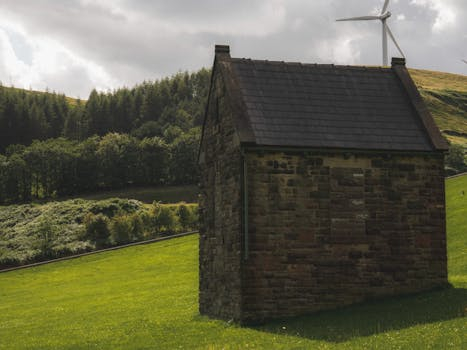Green Building Incentives: Tax Credits for Sustainable Projects
Welcome to the world of green building incentives! As society becomes increasingly aware of our environmental impact, the demand for sustainable building projects is on the rise. In an effort to promote and support these eco-friendly endeavors, governments and organizations around the world have implemented tax credit programs specifically aimed at green building initiatives. In this article, we will explore the benefits of green building and delve into the details of tax credits available for sustainable projects.
The Importance of Green Building
Green building, also known as sustainable building, is a method of construction that focuses on efficiency, durability, and environmental responsibility. It includes the use of renewable resources, energy-efficient materials, and sustainable building techniques to reduce negative impacts on the environment. According to the U.S. Green Building Council, buildings are responsible for 39% of CO2 emissions in the United States. By implementing green building practices, we can significantly reduce this number and create a more sustainable future.
Types of Green Building Incentives
Tax Credits
One of the most significant incentives for green building projects is tax credits. These are financial incentives given by governments to encourage specific behaviors. Tax credits for sustainable projects often come in the form of deductions or rebates on taxes paid by the building owner or developer. These credits can significantly reduce the upfront costs of green building, making it a more attractive option for many individuals and companies.
Additionally, tax credits are often offered for specific types of sustainable projects. For example, the U.S. federal tax credit program, known as the Energy-Efficient Commercial Buildings Deduction, provides incentives to building owners who install energy-efficient systems such as lighting, HVAC, and building envelope improvements. These credits can cover up to $1.80 per square foot for new or renovated buildings that meet certain energy-saving requirements.
Grants and Subsidies
In addition to tax credits, governments and organizations also offer grants and subsidies for green building initiatives. Unlike tax credits, which are typically claimed by building owners or developers, grants and subsidies are directly provided to the builder or contractor. These incentives can cover a portion of the project’s costs, making it more financially feasible to invest in sustainable building materials and methods.
Many states and municipalities offer grant programs specific to their region, making it essential to research local options. For example, the California Energy Commission offers the Nonresidential New Construction Incentives Program, which covers a portion of the costs for energy-efficient construction projects in the state.
Other Incentives
Aside from tax credits and grants, there are several other incentives for green building projects. These include expedited permit processing, density bonuses, and reduced or waived fees. In some cases, building owners may also receive recognition or awards for their sustainable efforts, which can be used as a marketing tool and attract potential tenants or buyers.
Challenges and Solutions
Initial Costs
One of the most significant challenges for green building is the higher upfront costs compared to traditional building methods. Sustainable materials and methods are often more expensive, making it challenging for property owners to justify the investment. However, with the help of tax credits and grants, these costs can be significantly offset, making green building a more feasible option.
Lack of Knowledge
Another obstacle with green building is a lack of knowledge and understanding among builders and contractors. Many are unfamiliar with sustainable building techniques and materials, making it less likely to be chosen as an option for a project. To combat this, governments and organizations offer training programs and educational resources to increase awareness and provide knowledge about green building practices.
Conclusion
In conclusion, green building incentives, such as tax credits and grants, play a significant role in promoting sustainable construction projects. These incentives not only provide financial benefits for building owners but also have a positive impact on the environment by reducing carbon emissions and promoting energy-saving practices. As the demand for sustainable buildings continues to grow, it is crucial for governments and organizations to continue to support and encourage green building initiatives through various incentives and programs.











